Reproduction in algae is the production of young ones (offspring) of the same kind as themselves.
Generally, all three types of reproduction are observed in algae, such as:
- Vegetative Reproduction
- Asexual Reproduction
- Sexual Reproduction
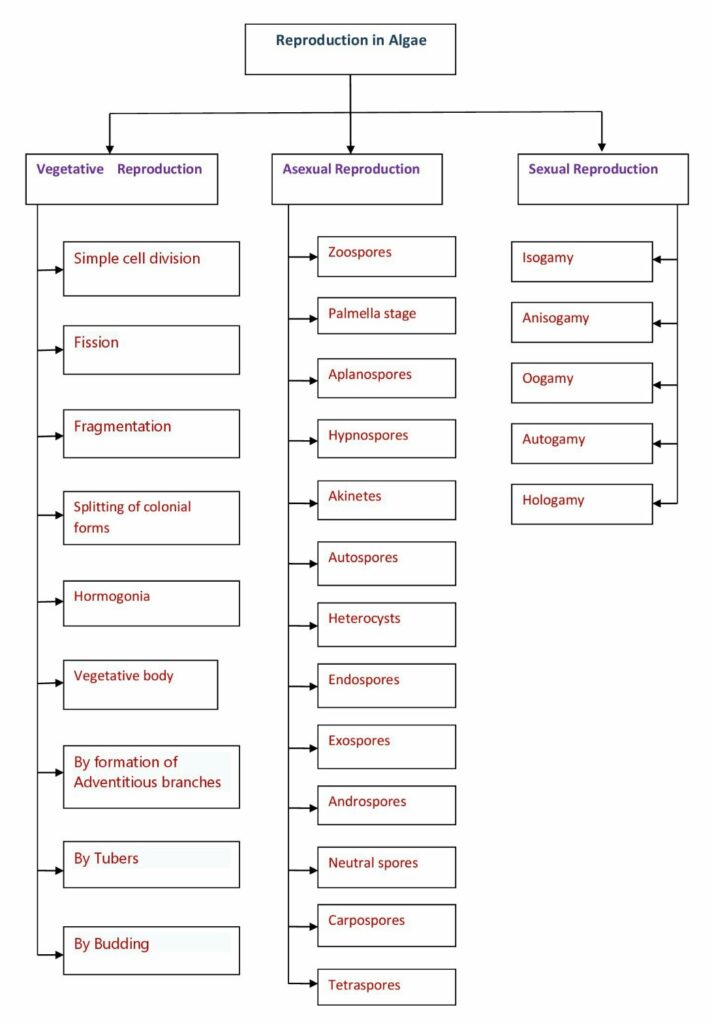
Vegetative Reproduction in Algae
The method by which new individuals are formed directly from the vegetative parts without any change in the protoplast is called vegetative reproduction.
It takes place by the following methods, such as:
Simple Cell Division
- This type of reproduction is found in unicellular algae.
- It takes place simply by cell division, in which one cell divides to form two cells, e.g., Synechococcus of Cyanophyceae.
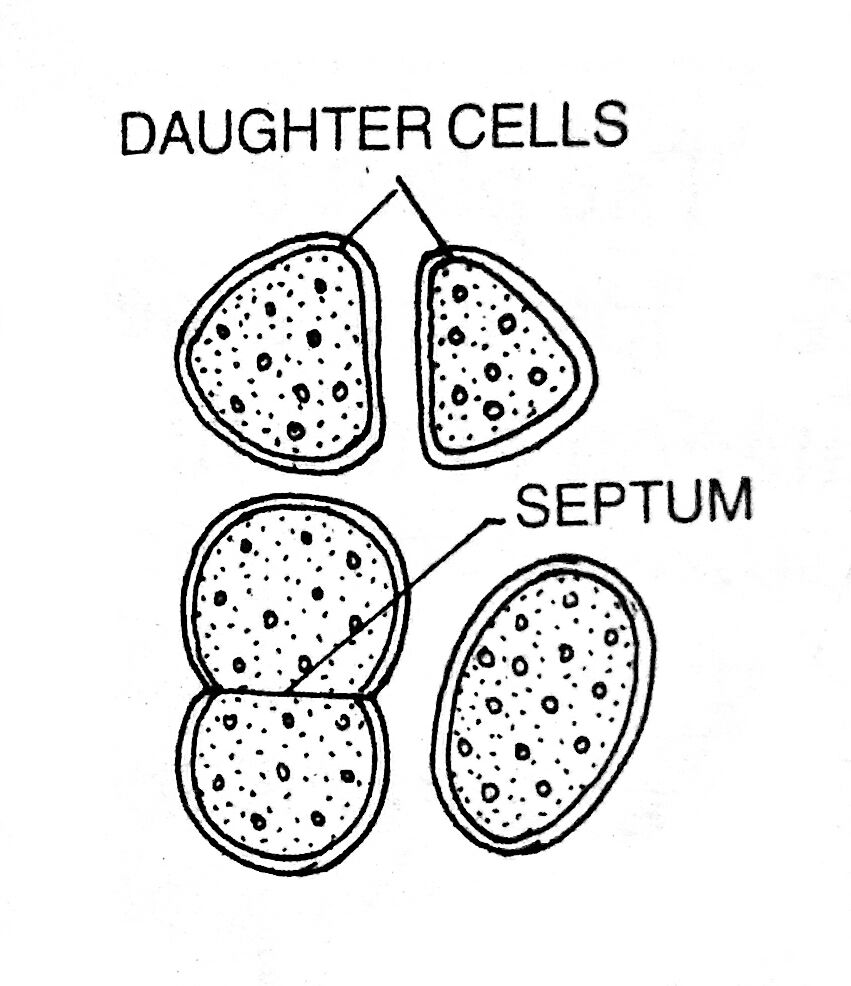
Fission
- In fission, the cell is divided by the formation of a deep constriction (septum formation) on the sides of the cell.
- This method of reproduction is common in diatoms and other unicellular algae.
Fragmentation
- The fragmentation method is very common in filamentous algae of the Chlorophyceae and Phaeophyceae.
- The plant body (filament) breaks up into one or more fragments. Each fragment may give rise to a new plant by the division of cells.
- Spirogyra, Ulothrix, Zygnema, Oscillatoria, Oedogonium, Cylindrospermum, etc. are common examples of fragmentation.
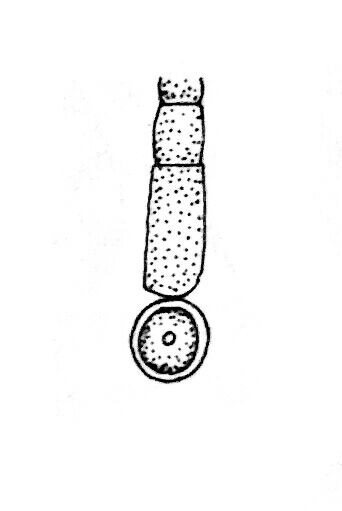
Fragmentation of the filament may take place:
- Mechanical fragmentation
- Water force-induced fragmentation
- Fragmentation due to biological means:
- Fragmentation is due to the presence of special structures in filaments
Splitting of Colonial Forms
- In this type, the mature colonies are split up into one or more small parts, each of which gives rise to a new mature colony.
- This method may be included in the fragmentation type, e.g., Aphanothece, Dictyosphaerium, etc.
Hormogonia
- Algal forms of the group Myxophyceae and Cyanophyceae are vegetatively reproduced by the method of hormogonia.
- Trichomes of algae break up into hormogia(small fragments) and each hormogonium grows to form a new plant.
- For example, Nostoc, Cylindrospermum, Oscillatoria, etc.

Vegetative Body
- In some forms, such as Chara and Nitella Vegetative bodies like Amylum stars and bulbils develop on the plant body, which they detach and give rise to a new plant.
By Formation of Adventitious Branches
- In some algae, adventitious branches are formed in the large thallus.
- When these branches are separated from the parent thallus, they develop into new plants, e.g., Dictyota, Fucus, etc.
By Tubers
- In some rhizoidal portions of Chara or in internodal portions, some cells accumulate starch and other food substances and get swelled to form tuber-like structures.
- When these tubers get separated from the parent thallus, they are capable of developing new plants.
By Budding
- In Protosiphon and some other algae, vegetative reproduction takes place by budding.
- During bud formation, a proliferation of vesicle-like structures initially occurs, which gets separated from the parent cell by a septum.
- These buds have the power to generate new plants.
Asexual Reproduction in Algae
In several groups of algae, asexual reproduction can be seen. It involves the multiplication of species by the formation of specialized reproductive cells called asexual spores.
In this method, small sporangia are developed in which spores are formed either in the whole plant or in part of the plant. These spores germinate to give rise to a new plant.
It occurs by the following methods:
Zoospores
- The zoospores are flagellated motile naked spores (asexual structures) which may be formed either within a specialized structure called a zoosporangium or from the vegetative cell.
- The zoospores may be biflagellate (with two flagella, e.g., Chlamydomonas), quadriflagellate (with four flagella, e.g., Ulothrix), or multiflagellate (with many flagella, e.g., Oedogonium).
- Zoospores are formed under favorable conditions.
- When the zoospores mature, the parental wall raptures and release them. They swim in the water, drop their flagella and germinate to give rise to new plants.
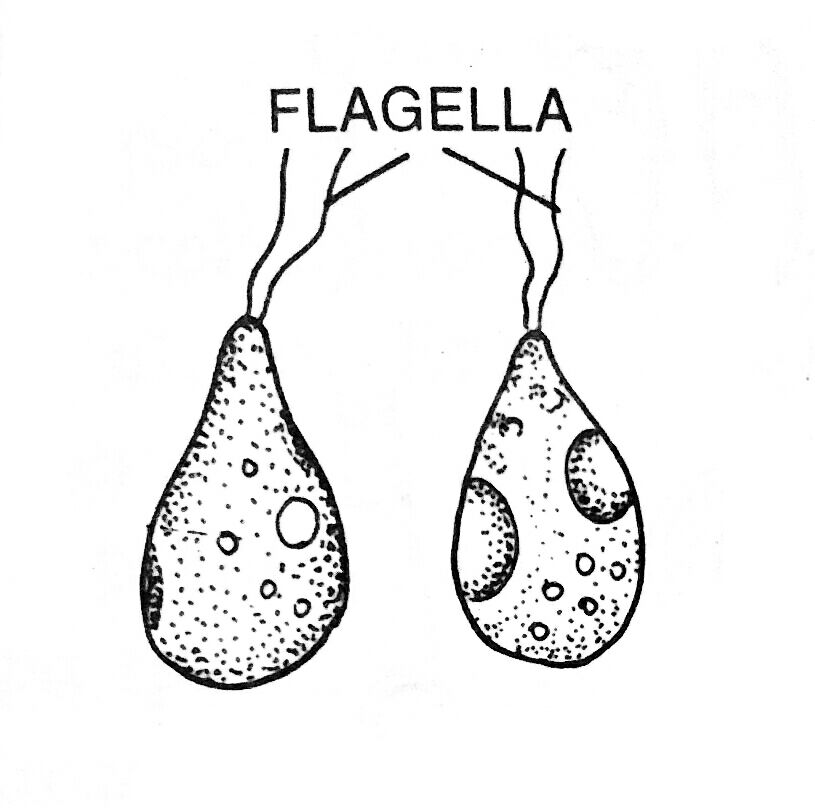
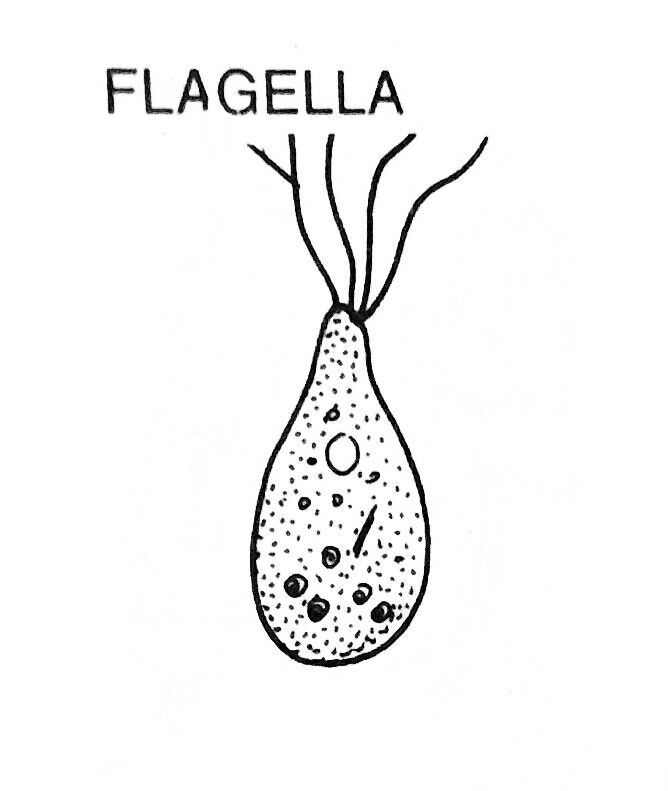
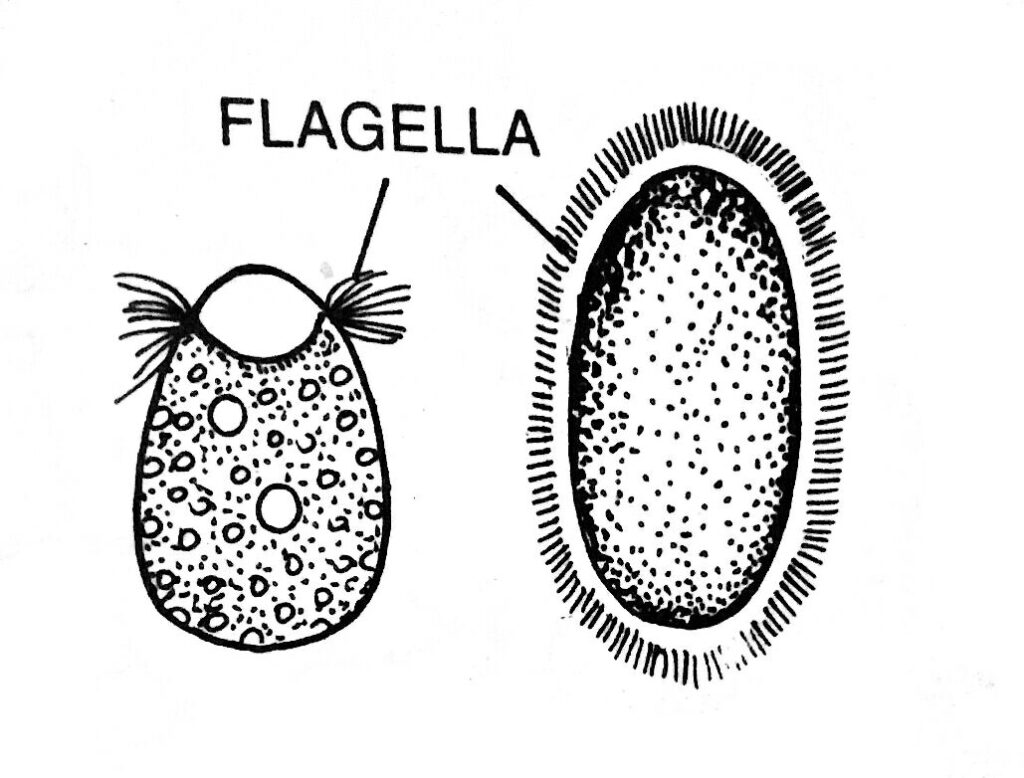
Palmella Stage
- In some algae, such as Chlamydomonas, the zoospores alter their formation, are not able to get out of the parent cell, and remain involved in a mucilage sheath.
- The non-motile daughter cells may divide again and form a colony-like structure called the palmella stage.
- During unfavorable conditions, this stage is found. With the onset of favorable conditions, each daughter cell develops into a new plant.
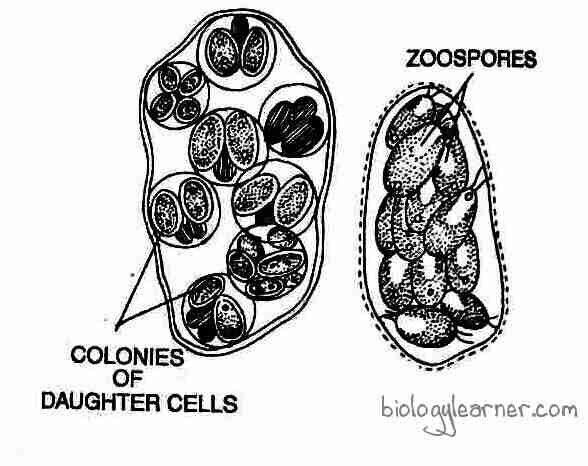
Aplanospores
- In unfavorable conditions, instead of zoospores, aplanospores are formed.
- Aplanospores are thin-walled, non-flagellated, non-motile spores formed in some aquatic algae(e.g., Chlorococcus, Ulothrix, Microspora, etc.).
- Each aplanospore is surrounded by a definite wall that is distinct from the parent cell wall.
- The aplanospore comes out of the parent cell and forms a new plant with the onset of favorable environmental conditions.

Hypnospores
- When aplanospore-like structures are enveloped by a thicker wall with abundant food reserves, then such spores are called hypnospores.
- They are formed under unfavorable conditions.
- Each hypnospore germinates after a resting period to give rise to a new plant, e.g., Pediastrum, Sphaerella.
Akinetes
- In Cladophora and Pithophora, the complete cell develops a very thick wall around it during dry conditions called akinetes.
- Akinetes, under suitable environmental conditions, germinate into new plants.
Autospores
- Autospores are non-motile spores that resemble the parent cell in shape and structure (when autospores are present in the parent cell, they start metamorphosing into parent-like cells).
- They are also called resting spores.
- Autospores are formed under favorable conditions, e.g., Chlorococcus, Chlorella, Scenedesmus, etc.
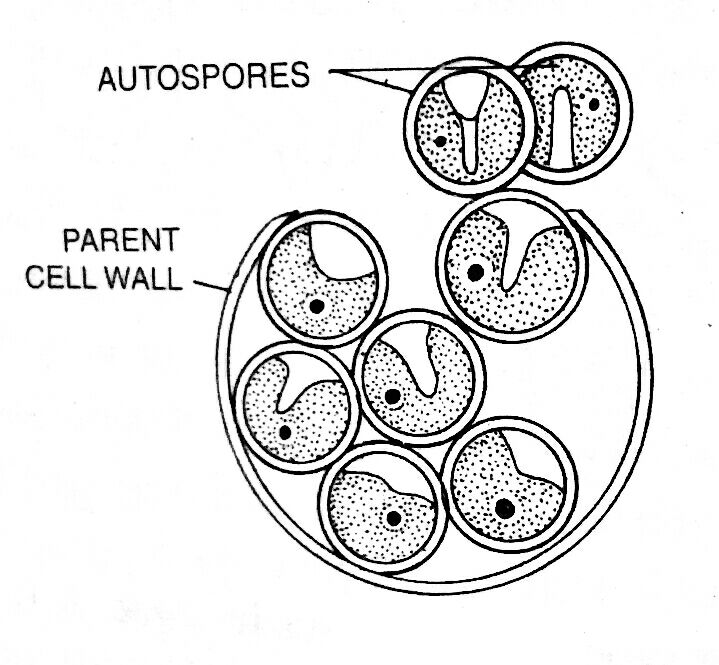
Heterocysts
- Heterocysts are abortive, specialized, larger, thickened spore-like vegetative cells of some filamentous algae.
- In exceptional cases, each heterocyst germinates to produce a new filamentous plant, e.g., Nostoc, Rivularia, Anabaena, etc.
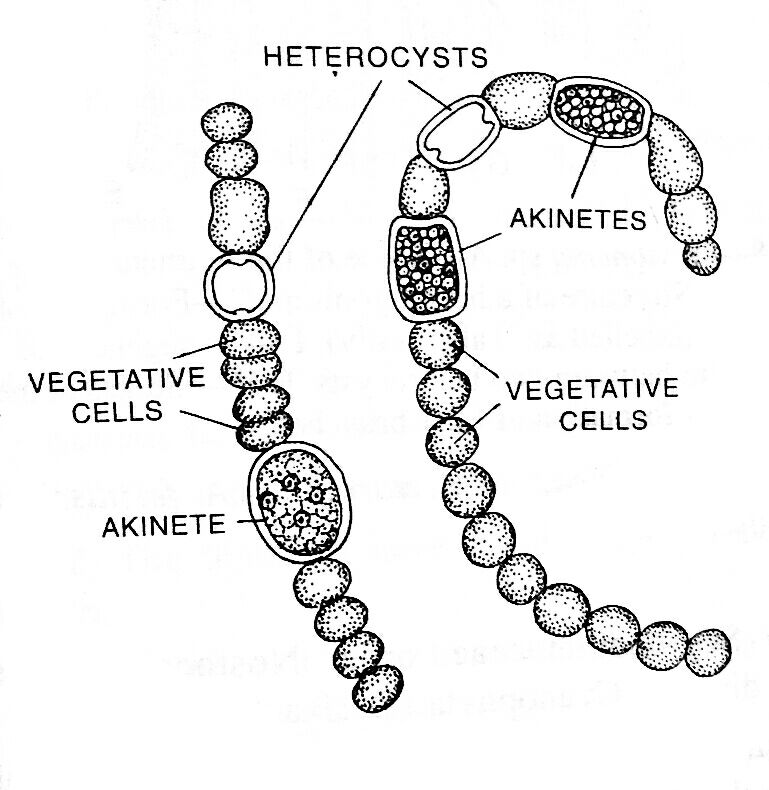
Endospores
- Endospores are non-flagellated, thin-walled spores formed inside the cells of members of the Rhodophyceae.
- Each endospore germinates into a new individual plant, e.g., Dermocarpa.
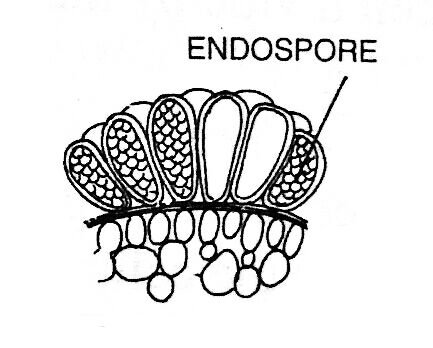
Exospores
- These are thin-walled, non-flagellated spores like endospores but formed outside the cells.
- Exospores are found in some unicellular algae, e.g., Chamaesiphon.
Androspores
- They are motile, multiflagellated, and formed in androsporangia.
- On germination, androspores form dwarf males, e.g., Oedogonium.
Neutral Spores
- They are formed in Plurilocular sporangia in members of Phaeophyceae.
- Neutral spores or neutral zoospores germinate to form the same diploid plants(sporophytic plants).
Carpospores
- In some members of the Rhodophyceae, carpospores are formed in the carposporangium.
- Carpospores germinate to give rise to tetrasporophyte.
Tetraspores
- In Polysiphonia and some other members of Rhodophyceae, tetraspores are formed in tetrasporophyte sporangia.
- On germination, these non-motile spores give rise to new male and female plants.
Sexual Reproduction in Algae
Sexual reproduction takes place by the fusion of the sexual reproductive units called gametes. Gametes are haploid structures and are formed in sac-like gametangia.
When male and female gametes are on the same thallus, the condition is called a homothallic condition or stage. While male and female gametes are present on different thalli, the condition is called a heterothallic condition or stage. The haploid gametes fertilise to form a diploid zygote.
On the basis of behavior, function, and structure of gametes, sexual reproduction is of the following types:
Isogamy
- This is a simple type of sexual reproduction in which fusing gametes are morphologically similar and are called isogametes.
- The fusing gametes may be motile (with flagella) or non-motile (without flagella), e.g., Chlamydomonas, Ulothrix, Cladophora, Zygnema, etc.
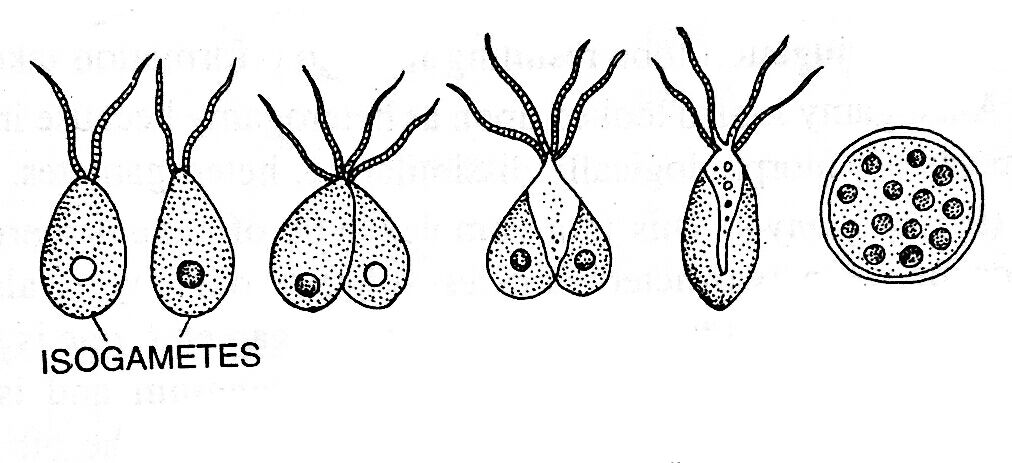
Anisogamy
- In anisogamy, the fusing gametes are morphologically alike (may vary in size and form) but dissimilar in behavior, and are called anisogametes or heterogametes.
- The gametes are formed in different gametangia. Mostly, larger gametes are less active and formed in smaller numbers, while smaller gametes are more active and formed in relatively large numbers.
- The larger gametes are called macrogametes, or female gametes, and the smaller gametes are called microgametes, or male gametes, e.g., Chlamydomonas braunii, Eudorina, Pandorina, etc.
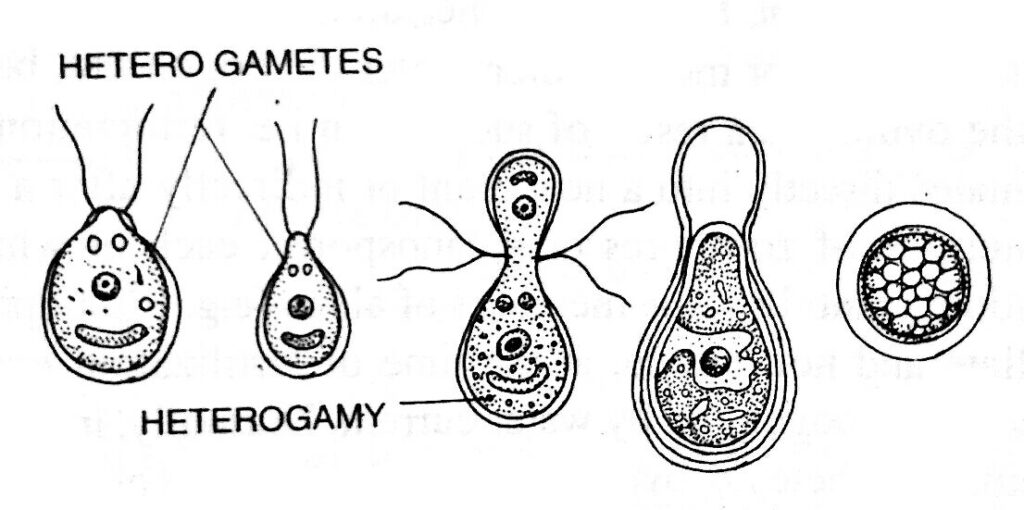
Oogamy
- It is a highly advanced type of sexual reproduction in which the male gamete is quite distinct from the female gamete.
- The male gametes, or microgametes, are smaller, motile, and active, while the female gametes, or macrogametes, are large, non-motile, and inactive.
- Microgametes are formed in the male structure called antheridia, and the macrogametes are formed in the female structure called oogonia.
- During fertilization, the motile male gametes reach the oogonium to fertilize the egg.
- A diploid zygote is formed after fertilisation, e.g., Volvox, Oedogonium, Vaucheria, Chara, etc.

Autogamy
- In autogamy, two nuclei of one cell or different cells of a plant fuse to form diploid nuclei.
- Here, only karyogamy takes place.
- There is no external gene transfer in autogamy, e.g., Diatoms.
Hologamy
- Some unicellular algae, e.g., Chlamydomonas, and Dunaliella, after spending some time in a vegetative state, the unicellular thallus of opposite strains (-) and (+) behave as gametes directly.
- The thalli fuse to form a diploid zygote.
- Hologamy is a more evolved process than autogamy because zygote formation occurs after the fusion of two plants.
